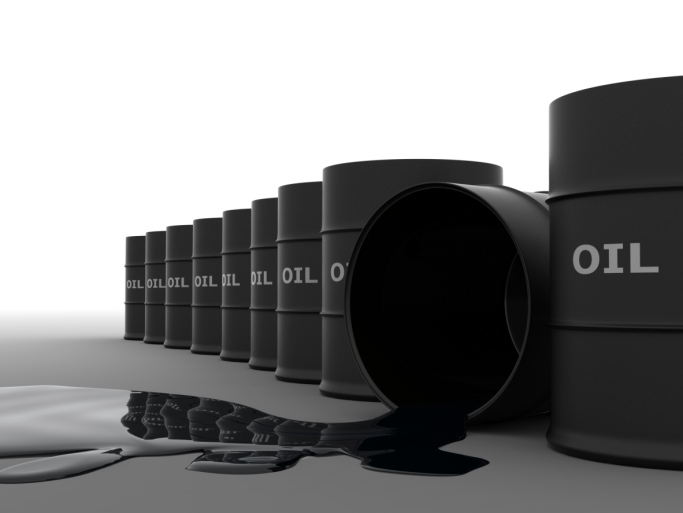By Nick Cunningham of Oilprice.com
The oil and gas boom in the United States was made possible by the extensive credit afforded to drillers. Not only has financing come from company shareholders and traditional banks, but hundreds of billions of dollars have also come from junk-bond investors looking for high returns.
Junk-bond debt in energy has reached $210 billion, which is about 16 percent of the $1.3 trillion junk-bond market. That is a dramatic rise from just 4 percent that energy debt represented 10 years ago.
As is the nature of the junk-bond market, lots of money flowed to companies with much riskier drilling prospects than, say, the oil majors. Maybe drillers were venturing into an uncertain shale play; maybe they didn’t have a lot of cash on hand or were a small startup. Whatever the case may be, there is a reason that they couldn’t offer “investment grade” bonds. In order to tap the bond market, these companies had to pay a hefty interest rate.
For investors, this offers the opportunity for high yield, which is why hundreds of billions of dollars helped finance companies in disparate parts of the country looking to drill in shale. When oil prices were high and production was relentlessly climbing, energy related junk bonds looked highly profitable.
But junk bonds pay high yields because they are high risk, and with oil prices dipping below $70 per barrel, companies that offered junk bonds may not have the revenue to pay back bond holders, potentially leading to steep losses in the coming weeks and months.
The situation will compound itself if oil prices stay low. The junk bond market may begin to shun risky drilling companies, cutting off access to capital. Without the ability to finance drilling, smaller or more indebted oil companies may not have a future. The Wall Street Journal profiled a few fund managers who are beginning to steer clear of smaller oil companies. Moody’s Investors Service downgraded the oil and gas sector on November 25 to a “negative” outlook because of falling oil prices.
If oil prices stay at $65 per barrel for three years, 40 percent of all energy junk bonds could be looking at default, according to a recent JP Morgan estimate. While that is a long-term and uncertain scenario, the pain is being felt today. The FT reported that a third of energy debt issued in the junk-bond market is currently in “distressed” territory.
That begs the question; could a shakeout of the oil industry spark a broader financial crisis? Banks and other financial institutions could be overly exposed to energy debt. The Telegraph paints a dire scenario in which the debt bubble bursts because of low oil prices, leading to a cascading 2008-style financial collapse, at least in the junk bond market.
Such a scenario may be a bit overblown. Persistently low interest rates keep demand for junk bonds high, meaning oil companies will probably be able to restructure their debt and continue to access capital. Also, drillers will not immediately face an existential crisis because many have hedged themselves, locking in prices for a certain amount of production.
But a junk bond crisis could become more likely if oil prices stay low for an extended period of time. Once a few companies begin to default, the problem could quickly spread. Another variable is how quickly the U.S. Federal Reserve will raise interest rates, which could significantly affect the attractiveness of the junk bond market.
Local and regional banks could be highly exposed as well, especially if energy loans make up a large share of their lending portfolio. The Wall Street Journal pointed out that banks like Oklahoma-based BOK Financial – with 19 percent of its loan portfolio made up of energy loans – could be the most vulnerable. Moreover, an economic downturn in regions that depend heavily on energy, such as Texas or North Dakota, could see a broader decline in demand for loans of all kinds. That could add to the pain for local banks.
Low oil prices are not just a problem for oil companies. Investment funds, hungry for yield in a low interest rate environment, have poured money into oil and gas. To be sure, we are far from a crisis at this point, but if oil prices don’t rebound, a lot of people are going to lose a lot of money.
Are You Still Paying With a Debit Card?
The average American spends $17,274 on debit cards a year, and it’s a HUGE mistake. First, debit cards don’t have the same fraud protections as credit cards. Once your money is gone, it’s gone. But more importantly you can actually get something back from this spending every time you swipe.
Issuers are handing out wild bonuses right now. With some you can earn up to 5% back on every purchase. That’s like getting a 5% discount on everything you buy!
Our top pick is kind of hard to imagine. Not only does it pay up to 5% back, it also includes a $200 cash back reward in the first six months, a 0% intro APR, and…. $0 annual fee. It’s quite literally free money for any one that uses a card regularly. Click here to learn more!
Flywheel Publishing has partnered with CardRatings to provide coverage of credit card products. Flywheel Publishing and CardRatings may receive a commission from card issuers.
Thank you for reading! Have some feedback for us?
Contact the 24/7 Wall St. editorial team.




